Analog, November 1979: A Retro-Review
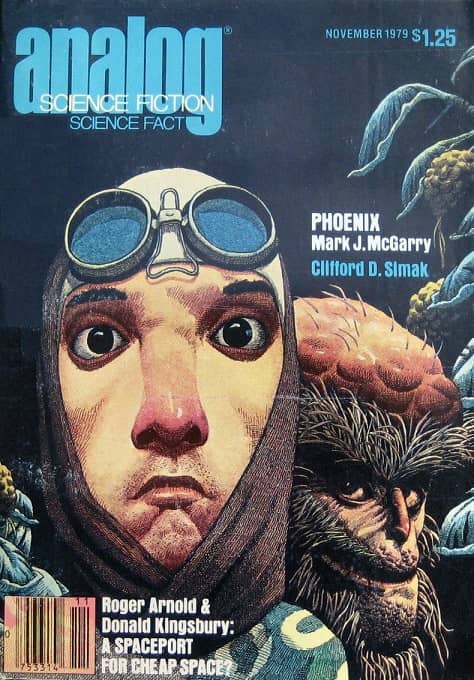 |
 |
The November 1979 Analog has probably the least appealing magazine cover I’ve ever seen. By Richard Anderson, for the story “Phoenix.” However, when we get to the story itself, that guy… that guy has seen some things, man.
Guest Editorial, by G. Harry Stine.
So… Harry Stine is a writer, space advocate, and a major founder of model rocketry, and he is unhappy with this whole idea that humans will never break the light speed barrier. So, as you do, he writes a bit of a hatchet-job on Albert Einstein, or at least those people lacking enough imagination to assume Einstein didn’t know what the hell he was talking about.
He was so successful at it, as a matter of fact, that a whole new cult of Keepers of the Faith have taken over and continue to look upon the Universe with the tunnel vision created by the blinders of their interpretations of Einstein’s work.
He goes on like this for easily 6 pages, hitting all the high points of various scientific ‘certainties’ that were exploded by later experimentations and observations. At least it wasn’t an article about telepathy…
Fiction, “Phoenix,” by Mark McGarry.
Lawrence Tollens works as a Starforce officer on Morgan’s World, searching to explain some of the inexplicable behavior of the aliens, and unravel the mystery of a psyche-shattering event his uncle William Evers experienced there some fifteen years earlier.
There is a war on and Starforce is trying to get a military base set up on Morgan’s World, but doing so requires the cooperation of the natives, which isn’t a problem, until in the start of winter the natives all leave their worksites, and their towns, heading into the wilds.
Tollens has several contacts with the natives, although he’s kept the full depth of his contacts pretty close to the vest. His main contact is one called “Dancer” — who has actually stayed behind to talk to him, but they can’t talk because Starforce has wisely implemented a buddy system and Tollens is never without company. It takes him a while to pit the lone research officer against the station commander and wrap it all up to send him out one more time to get to the bottom of things and get things moving again.
There are very powerful currents to this story. About what people are supposed to do, and what they are required to do, and what they are really supposed to do, and that oftentimes to help someone get to the very soul of the law requires breaking a lot of rules. The story also dives deep into uncertainty. Why will Dancer show Tollens and no one else what the natives are up to? Is Dancer simply a dancer or is he The Dancer, is he an outcast because he’ll have such intimate contact with Tollens, or is he privileged somehow? For that matter, is he even a ‘he’?
And yeah, Tollens finds out. His alien contact is, in fact, The Dancer, and the whole of the Moraganan nation watches the ritual dance whose penultimate ending is to coat the dancer’s fur with powdered magnesium and then burn it to death. Tollens is fine with it all, sort of hypnotized and drawn into the ritual and the sub-vocalization of thousands of the Morganans until the dancer’s screaming snap him out of it. The final act?
The circle of natives drew tighter around the smoldering corpse until Tollens could barely see the stone blade one of them held rise and fall, rise and fall, scattering droplets of blood and gobbets of carbonized flesh into the air.… The native who had wielded the knife know held a Morganan infant three times the size of a human newborn; it was still wet from the birth. The other natives passed before the infant, made gestures over it, and then it was set on the ground. It wobbled for a moment, unsure of its footing, and then it looked around with huge, dark eyes.
There is an undercurrent of compassion under the horror — The Dancer isn’t supposed to make noise, it isn’t supposed to scream, but it has made a change to the Ritual because it doesn’t want Tollens to break like his uncle did.
Woof! Like I said, Tollens has seen some things, man.
Article: “The Spaceport Part I.” An alternate means of Delivering Payload to Orbit, by Roger Arnold and Donald Kingsbury.
After a clumsy start involving a pseudo-myth about gnomes, the authors dig into the real meat of the issue: While it isn’t that much energy to get above the Earth’s atmosphere, it takes a lot of energy go actually get into orbit. The authors introduce the concept of a “mass driver,” that the energy exchanged between a lander and a space station upon docking (which will slow the station down, and thus drop it into a lower orbit) can be mostly regained when the mass of the lander is launched back to Earth — lifting the space station into a higher orbit.
That whole “energy exchanged between a lander and a space station” is not such an easy target to hit, as the space station has to orbit at like 7,000+ meters per second and thus most ‘energy exchanges’ are catastrophic for both vehicles. However! Given the proper type of runway, the lander can be braked non-destructively. This puts us back into a fundamental problem, either a huge runway (hundreds of miles huge) to catch a lander with nearly no horizontal velocity, or else a huge lander that must carry extra fuel to get some horizontal velocity.
The authors’ workaround is pretty keen, with the idea that you could build a slightly larger lander, and have a really long runway (tens of miles, not hundreds) if the runway and the lander a both equipped with superconducting coils that will use magnetic suspension to brake the lander. The runway becomes a loooong bar of metal and the lander doesn’t actually touch the space station until very close to the end of the landing process. Better yet, the landing procedure will generate a current which can then be used to re-accelerate the lander for the return trip, or from the lander’s point of view, to actually decelerate it so it can ‘fall’ back into the Earth without a lot of horizontal velocity to shed.”
It is an exciting set of proposals, a look into a potential future of space travel, and with the Space Shuttle just around the corner (remember, 1979! The first launch of the shuttle is not quite two years away), it has never been a more exhilarating time!
But, of course, as with all things, there are some cold equations that really harsh the vibe. Mostly, the deeper the authors delve into it, the smaller the landers have to be, like really small. And that means more landers launching, which means you not only need a fullproof lander/orbiter system, but you need a fullproof lander launching system.
Also harshing the vibe, is that from my position in the future, I can say that we’re still a looong way from a full proof launching system.
Column: Biolog– Biographies of upcoming writers. Kevin O’Donnell, Jr. is the up-and-coming writer profiled in Biolog. His backstory is like oh, so many others.
He’d been reading between five and ten science fiction paperbacks a week, and often exclaimed that he could writer better stories than most of the tripe at hand.
Fiction: The Visitors, Part 2 of 3, by Clifford D. Simak, art by Vincent DiFate.
In Part 1 the aliens come to Earth — but the aliens are giant building-sized cubes that do not communicate in any meaningful way. They also ingest wood (trees, mostly, but they’ll go after lumber yards) and excrete massive bundles of cellulose. The cubes reflect any kinetic energy attack back at the attacker (as one over-eager hunter learns, to his detriment).
One person, Jerry Conklin, a graduate forestry student at the University of Minnesota, is seized by a tentacle extruded form the box and hauled inside. He thinks what happened next was an attempt to communicate, but no communication takes place, instead he is left with vague impressions that the box is somehow like a tree and receives a strong impression of ‘home.’
That’s part 1. In part 2, the rest of the boxes (still in orbit) begin to land and graze. The first box buds off young (or what are presumed to be young) who begin to devour the cellulose cubes, and one cube (the first known to have landed) traces out a pattern in a recently-plowed field, and won’t let anyone else approach it. One cube also seems to ‘die’ for no reason at all, and the other cubes don’t seem to care.
That’s the overall story of the aliens, but the real story is the cast of characters who have to deal with the situation. Simak has several layers of characters, from the President of the US, various newspapermen (and women), military types, and Jerry Conklin.
Simak contrasts the weirdness of these flying/floating building-sized cubes (a building sized thing hovering a few feet of the ground blocks traffic) and how quickly we get used to it (detour, just like anything else), the high-level freak-outs, the petty politics, the high-level politics (this is only happening in America and one of the decisions that the President has to make is if he will allow non-U.S. scientists to investigate).
Jerry Conklin discovers that the box that took him is in a field in Iowa and goes to see it. It doesn’t chase him off, but it doesn’t attempt to communicate with him either. He leaves, sneaks back, spends some time there, and just as he’s about to leave gets yanked back in.
He had fallen to his knees and now he rose slowly to his feet and as he did, he reeled under a flood of hammering sensations that assailed him out of nowhere. He went to his knees again and stayed there, head bent, hands against the floor to keep from falling flat upon his face.
And all the while the sensations hammered at him, thundering in is brain, so many and so powerful that he could not shut them out, nor able to distinguish what might be the import of them.
Fiction: “Old Friends,” by Kevin O’Donnell Jr., art by Richard Anderson.
This is a weird one, weird, but good. Two old men, Mr. Schmidt and Mr. O’Leary, meet at a bench in the park. The two men have known each other for a few years, maybe less than a decade, and in spite of their easy friendship, they keep secrets from each other.
[O’Leary] sat at the small table, and glanced around the restaurant, making sure no one but the Greek and his guards could overhear. “I’ve a favor to ask.”
“The contract on you? Hell, Gimp, that was cancelled a long time ago.”
“I hadn’t known.” He cocked his head. Self-effacement could end — if he wanted it to. “But no, it’s your help for which I’ve come.”
And Mr. Schmidt is far from a saint himself.
[…]in the phone booth at the corner, Schmidt waited for his call to be answered. Brrz, brrzz, br — “Hello?” said a deep gravelly voice.
“Hans Dortendurf?”
“Yes, speaking. Who — ”
“Is this the Hans Dortendurf who is Deputy Chief of Police?”
“Yes, who — ”
“ — Sieg heil, my long sleeper. This is our alarm clock.”
Dortendurf’s breathing stopped. Through the receiver creaked the sound of a heavy-set man dropping to a tired chair. Then, in a whisper, “For God’s sakes, I was a teenager then.” A pause followed — a long one. Then: “Thirty-five years ago it was finished, kaput — why — ”
“I apologize, Herr Dortendurf, but I need you.”
Why are these two rather sinister old men (FWIW, Mr. Schmitt is an early refugee from Von Braun’s rocketry program) begging for favors and putting the squeeze on people? Because they have become aware that the park bench they meet on is special, somehow, that it keeps the cold wind at bay, that it eases their aching joints. Also, shadowy figures are plotting against this bench, moving it, and at one-point painting over it.
The bench has its own secrets.
The instant its friends had exposed enough of its surface area, the bench began to transmit:
“The presence of Neralele on 186XT-3 is indisputable. It is also malignant, though the referees may consider this artifact’s evidence biased, scanty, or both. For our purposes, however, we can treat it as established fact.
“This artifact has slain one, justifiably; the arena looms that much closer.”
The bench is an alien observer in the middle of a cat-and-also-cat game of alien… pre-invasion tactics? I’m not 100% sure, yet the story is intriguing nonetheless, and it manages to keep the various plates spinning.
Fiction: “Movers and Shakers,” by Thomas A. Easton.
Sanford Randall is a sad sack man, scraping by by taking light hauling work and other menial physical jobs. That all changes when Sanford gets a visitor from another world.
There he was, three feet high, sitting or standing or squatting whatever he called it, on my doorstep. One squirmy looking finger, like an octopus’ arm except it didn’t’ have any suckers… His eyes, black and wet, with no whites, were buried in folds of scaly skin. He looked like a cross between a fish and a squid. Smelled like one too.
Wirtz, the alien, is a bit of an anthropologist, and he has a deal for Sanford. It has determined to make him a Mover and Shaker, funding the operation with a bag of small diamonds. With the funds Sanford sets himself up as a trash hauler, expands his operation to a fleet of trucks, and from there purchases the local landfill. Wirtz is happy enough, as near as Sanford can tell, but it wants to set up a sorting device, shredder, magnets, air blowers for separating paper, shaking screens, and balers for the things sorted. What’s more, Wirtz wants a small control room set up over the operation that can reach in and snatch out the odd bit of metal that gets into the paper stream, that kind of thing.
The operation is going well for them both, the hauling outfit makes money, the landfill makes money, and the recycling operation makes even more money, enough to keep Sanford and Wirtz in comfort.
Then The Man shows up, the OSHA man, who is very curious about the small control box, and Sanford gets totally busted. But the OSHA guy doesn’t know what the hell Wirtz is, and has to consult with his superiors to determine just what kind of shit-hammer to drop on Sanford.
Wirtz is running the machines full-time, and it turns out he (it) isn’t really an alien anthropologist, as much as a space-tourist whose ship wrecked and a very valuable piece of equipment got picked up by some dumb human and thrown into the trash and Sanford is just a small cog in his catastrophic plan to get it back.
All good fun. Except for the fact I know too much about the landfill industry to buy it, to buy any of it! The Resource Conservation and Recovery Act (RCRA) was finalized in 1976, and any new landfill cells would have to have liner systems, leachate collection systems, groundwater monitoring systems, and possibly methane control systems. Why? Because landfills are like construction projects that never stop and generate their own poisonous chemicals and explosive gasses as they are built. And don’t even get me started on hazardous waste.
Hazardous waste? Glad you asked. While RCRA’s fundamental goal was to control disposal of hazardous waste, by 1979 the actual infrastructure for dealing with hazardous waste was far from in place, which meant that between the midnight movers and the side-payoffs, and the mob, hazardous waste would be commonplace.
Oh, and as far as general sorting and recycling. Hah! Again, I say hah! Nothing tears up equipment like trash. The wire! The cable! The stuff that’s on fire. The acids, the bases! The raccoons!
“Movers and Shakers,” clearly a work of fiction.
Column: The Alternate View, by G. Harry Stine.
Stine is back, baby! Two columns in one issue. Good work, if you can get it. Mr. Stine had recently gone through the testing necessary to augment his airplane pilot license to qualify to “fly Blind.” It was, apparently, a brutal experience — deprived of visual inputs and cues directly from the outside world, operating only by maps, instruments, and a few staticy instructions.
A big part of the difficulty is that, being creatures that have evolved on this planet under very certain conditions, the fact is, deep down in our minds, we do not really trust the gauges; we would rather “wing it” on gut feeling, not a good idea when we are in situations far beyond what we were evolved for.
It is why Frank Tallman, the Grand Old Man of movie stunt flying, flew a fully-equipped modern airplane into a 3000-foot ridge practically in his own backyard. And it is also why some technician shrugged at the readout of the gauges at Three Mile Island.
We are, basically, used to thinking in two dimensions. He hypothesizes that in the future, once people start spending their early lives in low-g, we will get much better at dealing with three dimensions. Then, he kind of spins off on some discussions of failsafe systems and how they are not safe from failing, which kind of defeats the purpose of his idea that you gotta trust your instruments and not your flawed senses. Pick a lane, Stine!
Column: The Reference Library, by Spider Robinson.
The massive haul of SF books hinted at my reviews of Magazine of Fantasy and Science Fiction and Galileo are somewhat wrangled by Mr. Robinson and his co-editor, but he has to break into four parts to get the job done:
1. Academic!
William Contento’s Index to Science Fiction Anthologies and Collections “The Contento Index is of enormous value not only to a review and anthologist like me… but to teachers, scholars, serious collectors and even causal frequenters…
Donald H. Tuck’s Encyclopedia of Science Fiction and Fantasy, Volume II, “ Name any writer who worked in one of those three fields [SF/F/Weird Fiction] and the Tuck Encyclopedia will tell you whatever is known about him or her biographically (often fascinating), then list every book he or she ever published.”
CDN SF&F: A Bibliography of Canadian Science Fiction and Fantasy, “There’s even a reprint of a brief, hilariously pretentious 1942 essay by Donald Wollheim, commanding Canadian SF to find itself.”
Science Fiction Book Review Index, “It is precisely what it says: index listings of SF book reviews published in 1977, keyed by author and by title.
Voice of Youth Index, “If you feel that your local library’s selection of SF for young adults is rotten, that is, if you live near the average library, get them a subscription to VOYA.”
In Memory Yet Green “I sat down intending to skim very lightly through it… and looked up blinking to discover it was two days later and I had read every word.”
2. Opinion!
Damon Knight, In Search of Wonder, “I was made distinctly uneasy by the ferocity (and constancy) with which Knight went for the jugular.”
Heinlein in Dimension, “Panshin does accidentally hit upon some interesting insights into Heinlein’s work here and there, and does put an occasionally accurate finger on some of Heinlein’s literary weaknesses. But you would have to do what he obviously did not — read Heinlein, carefully — to tell the difference.”
The Science Fiction Novel, a collection of four essays based on speeches made by SF writers at the University of Chicago in 1957. “Altogether an absorbing and thought-provoking volume, recommended.”
Science Fiction: An Illustrated History, “A slipshod collection of irrelevancies, misinformation and some of the worst SF art ever perpetuated, designed to prove that European SF is the only real SF.”
Science Fiction: History, Science, Vision, “Brief discussions of some of the scientific knowledge necessary to an appreciation of SF; and a study of some of its classic forms and themes, illustrated by discussion of ten representative novels.”
3. Fiction!
The Wanting of Levine, “[Levine] is clearly an SF novel — for it plausibly portrays the election of the first Jewish President — an ex-raveling salesman and admitted multiple-adulterer — in 1988.”
Universe 9, “Only a fool would pass up a Terry Carr anthology — but Universe 9 is even more outstanding than usual.”
Nightwings, “I have to say I found it possibly the most annoying SF novel I’ve ever read. Would one of you out there who like did so much please explain to me how you got past the literally dozens of implausibility’s, impossibilities, and inconsistencies in it?”
Nightwalk, “A very good novel about a blinded secret agent who must extricate himself from extreme extreme hot water with the dubious help of a device which allows him to see through other men’s eyes only.
They also hit Alicia II, Vector Analysis, The Drawing of the Dark, and Black God’s Shadow.
Regarding Black God’s Shadow, Robinson says “Classic fantasy, here reprinted with the finest possible binding, paper and editorial supervision…”
4, Art!
Alicia Austin’s Age of Dreams, “She clearly deserved her 1971 Hugo.”
Upon the Winds of Yesterday, “There’s an element of whimsical humor in his work that reminds me of Kelly Freas at his best.”
The Fourth Book of Virgil Finlay, “I said that one would have expected [the publisher] to by now have run out of prime Finlay and begun trotting out the second-rate filler. Well, 120 plates later, it hasn’t happened yet.”
The final page of the magazine is an ad for a magazine called Claustrophobia, the combination of space industrialization, life extension, and libertarianism. Did I say magazine? My mistake “Secondly, we’re not a magazine; we’re a combozine. Claustrophobia binds six publications into one monthly package.”
Sounds absolutely mad, mad in the way only 1979 can be!
With Steven Silver working through his Golden Age SF essays, it is time to identify the elephant in the room. The quote “the golden age of sci-if is twelve” may have held sway from the 30s through the mid 70s, but by 1979 a new player was on the block. Like a proton torpedo into an exhaust vent, a new age was upon science-fiction, a new power was rising, and the “golden age of games is twelve” was about to take hold.
Previous entries the Quatro-Decadal Reviews include:
1969
Amazing Stories, November 1969
Galaxy Science Fiction, November 1969
The Magazine of Fantasy & Science Fiction, November 1969
Worlds of If, November 1969
Analog Science Fiction/Science Fact, November 1969
Venture Science Fiction, November 1969
A Decadal Review of Science Fiction from November 1969: Wrap-up
1979
Quatro-Decadal Review, November 1979: A Brief Look Back
The Magazine of Fantasy & Science Fiction, November 1979
Galileo, November 1979
Adrian Simmons is an editor for Heroic Fantasy Quarterly, support them on Patreon!
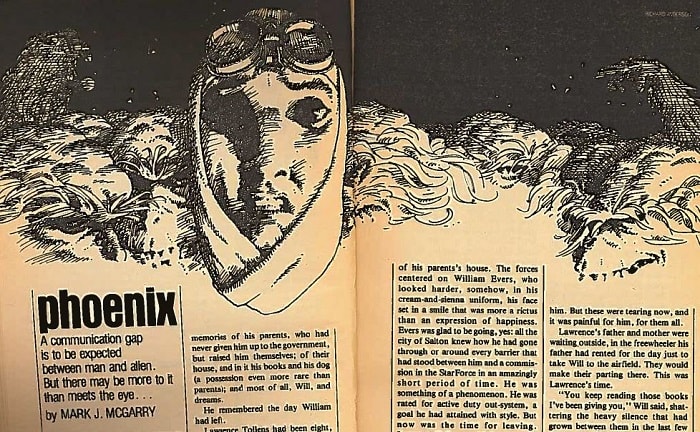

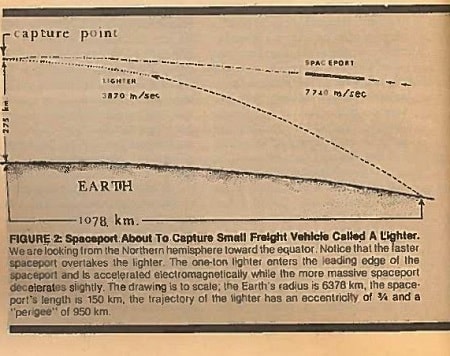




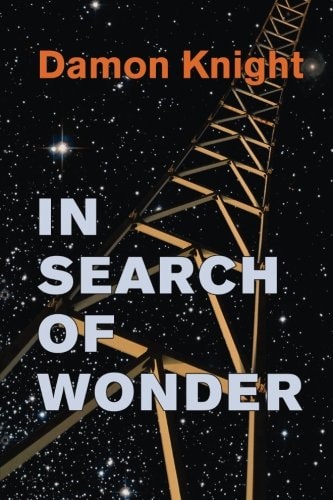
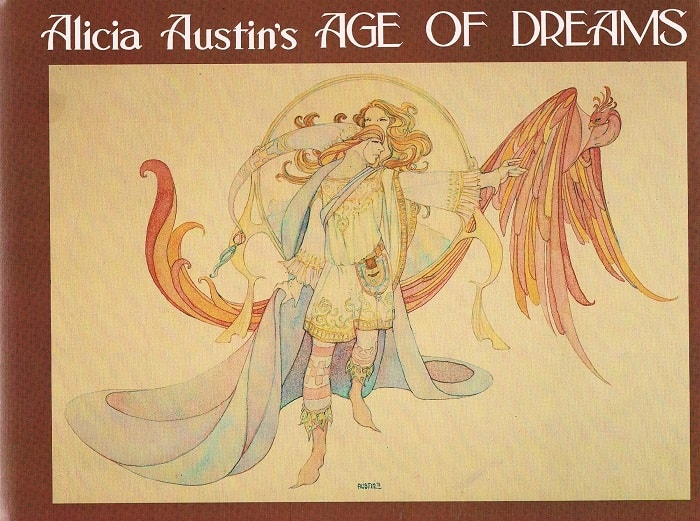


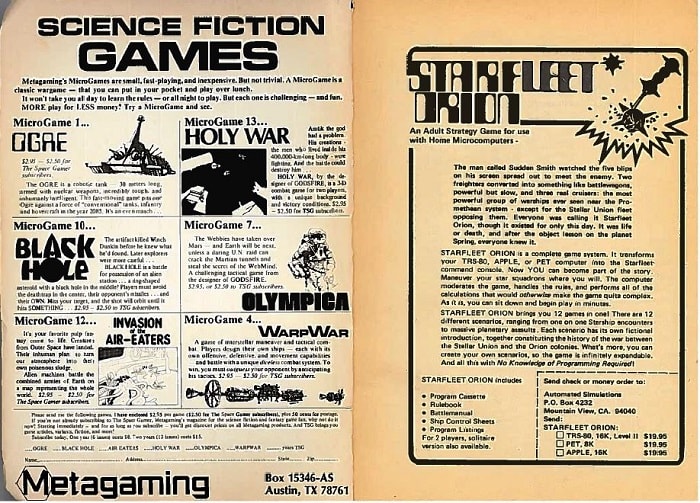
Wait. In “The Visitors”, one of the alien cubes “traces out a pattern in a recently plowed field”.
Did Clifford Simak invent crop circles?
While the timing is right (crop circles began showing up in the mid 1970s), however, the big alien box doesn’t actually leave any marks on the ground.
That said, I haven’t read the follow up installment to the story, so who knows what circular or rhomboid designs may spring up?